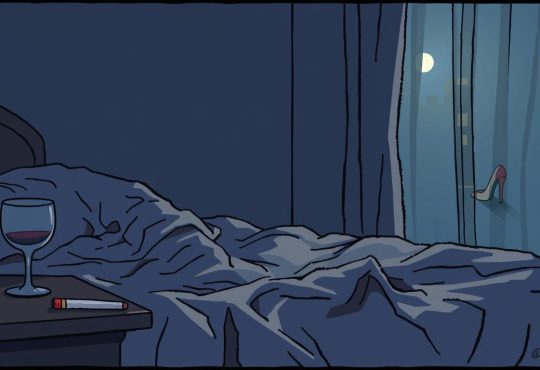
Have you ever wondered if love has an expiration date? In today’s world, more older adults are embracing the idea of finding love later in life. But what does this mean for those considering remarriage in their golden years?
Over the years, societal norms have shifted, and longer life expectancy has played a significant role in this change. Studies show that remarriage rates among older adults have increased compared to younger groups. This trend highlights a growing acceptance of love and companionship at any stage of life.
In this article, we’ll explore the factors influencing remarriage among older adults. We’ll also dive into verified data from sources like Pew Research and the U.S. Census to provide a clear picture of marital trends today. Whether you’re curious about the differences between first marriages and remarriage, or simply want to understand the dynamics of love later in life, this guide has you covered.
On this Page:
Overview of Remarriage Trends in Later Life
Love knows no age limit, and remarriage trends in later life prove just that. Over the decades, societal attitudes toward marriage have shifted significantly. Today, more older adults are embracing the idea of finding love again, reshaping what it means to build a life together in the golden years.
Historical Shifts in Remarriage Rates
Since 1960, remarriage rates among older adults have seen a steady increase. For example, data shows that rates for those aged 55 to 64 rose from 55% to 67% by 2013. This upward trend reflects a growing acceptance of remarriage as a viable option for older individuals.
Several factors contribute to this shift. Longer life expectancy means people have more time to pursue new relationships. Additionally, changing social norms have made remarriage more acceptable across all age groups.
Key Demographic Insights and Social Norms
Historically, men have been more likely to remarry than women. This gender gap has narrowed over time, but differences still exist. For instance, older men often remarry at a faster rate compared to older women.
Cultural and societal expectations have also evolved. Marriage is no longer seen as a one-time event but as a journey that can include multiple chapters. This shift has encouraged more older adults to consider remarriage as a way to find companionship and happiness.
Family dynamics play a role too. As life expectancy increases, older couples often seek to build new bonds while maintaining connections with their existing families. This balance has made remarriage a more appealing choice for many.
Understanding the odds of remarriage after age 70
The journey of finding love doesn’t end with age—it evolves. For those in their golden years, remarriage offers a chance to build new connections and share life’s joys. But what makes this age group unique when it comes to marriage?
Statistical Evidence and Recent Data
Recent data from the U.S. Census and Pew Research Center shows a significant rise in remarriage rates among older adults. For those aged 65 and older, rates have climbed from 34% in 1960 to 50% in recent years. This upward trend highlights a growing acceptance of love in later life.
Divorce and previous marital status also play a role. Many older adults are entering their second or third marriage, seeking companionship and stability. For example, nearly 60% of divorced individuals aged 55 and older have remarried at some point.
Impact of Increased Life Expectancy
Longer life expectancy has reshaped the remarriage landscape. With more years ahead, older adults are more willing to explore new relationships. This shift is particularly evident among those aged 70 and above, who now have more time to build meaningful connections.
Living longer also means more opportunities to find the right partner. For many, remarriage is not just about love but also about sharing life’s experiences with someone special. This mindset has contributed to the rising remarriage rates in this age group.
In summary, the combination of longer lifespans and evolving social norms has made remarriage a viable and appealing option for older adults. Whether it’s a second or third marriage, the golden years offer a chance to start anew.
Analyzing Age and Gender Impacts on Remarriage
Exploring the dynamics of remarriage reveals fascinating insights into age and gender. These factors shape how individuals approach new relationships later in life. Let’s dive into the patterns and trends that define this unique landscape.
Gender Differences in Remarriage Patterns
Historically, men have been more likely to remarry than women. This trend persists, especially among older adults. For example, data shows that men aged 55 and above remarry at a faster rate compared to women in the same age group.
Several factors contribute to this gap. Men often have broader social networks, making it easier to meet potential partners. Additionally, societal expectations have traditionally encouraged men to seek companionship more actively.
However, the gender gap has narrowed among younger and middle-aged groups. This shift reflects evolving gender roles and changing societal norms. Women today are more independent and financially secure, which influences their decisions about remarriage.
Comparing Remarriage Rates Across Age Groups
Remarriage rates vary significantly across different age brackets. Younger adults, particularly those aged 25-54, show a more balanced remarriage pattern between genders. This balance is less evident among older adults, where the gender gap remains pronounced.
For instance, data indicates that men aged 65 and older are twice as likely to remarry as women in the same age group. This disparity highlights the unique challenges older women face, such as caregiving responsibilities and societal biases.
Evolving divorce rates also play a role. As divorce becomes more common among older adults, remarriage offers a chance to rebuild and find new companionship. This trend is reshaping the remarriage landscape across all age groups.
In summary, age and gender are key factors in understanding remarriage trends. While the gender gap has narrowed for younger adults, it remains significant for older individuals. These insights help us appreciate the complexities of love and companionship in later life.
Conclusion
Finding love later in life is more common than ever. Over the years, societal norms have shifted, making marriage a viable option for older adults. Data shows that remarriage rates have increased, reflecting a growing acceptance of companionship in later years.
Life expectancy plays a key role in this trend. With more time ahead, many seek meaningful connections, whether it’s a second or third marriage. The gender gap persists, with men often remarrying faster than women, but evolving norms are narrowing this divide.
Divorce rates and changing family dynamics have also reshaped marriage today. For many, remarriage offers a chance to rebuild and share life’s joys. As these trends continue, staying informed helps us understand the evolving landscape of love and partnership.










